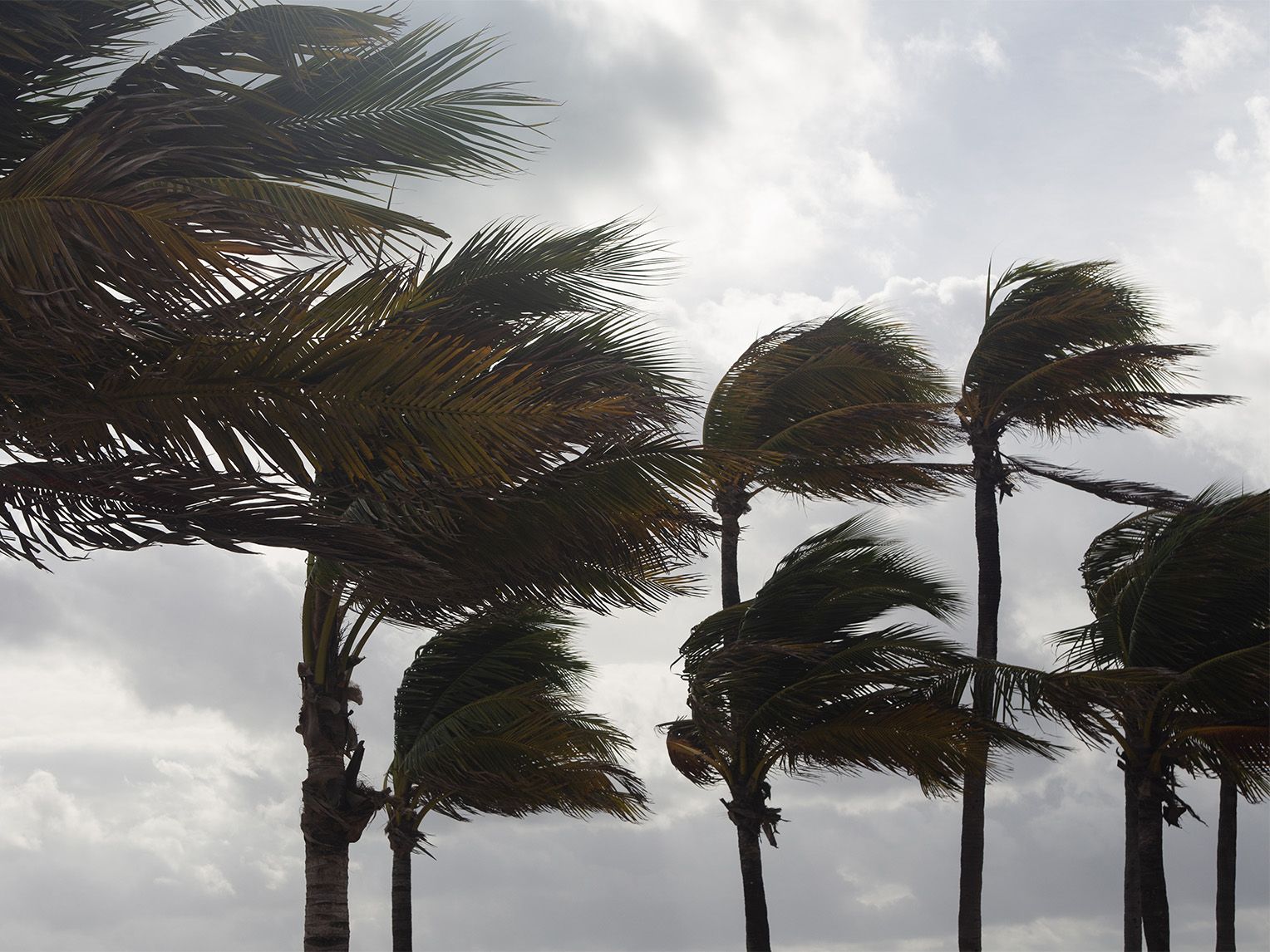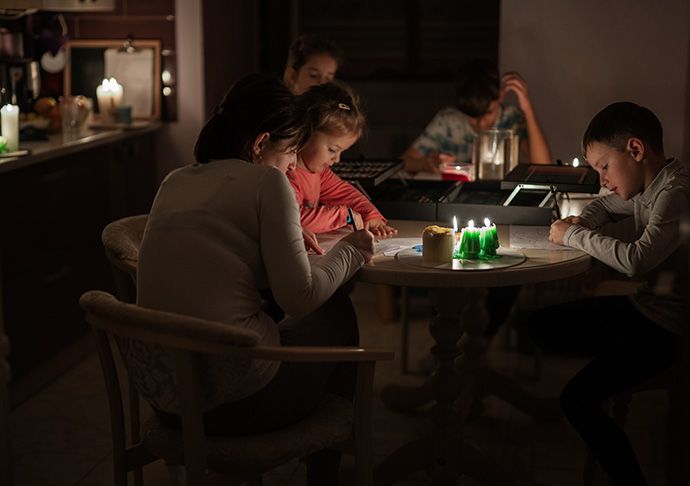Top 10 Reasons Power Outages Occur in America

They say if we don’t learn from the past, we’re likely to repeat it. Power outages are a perfect example. We know they’re going to happen, yet many people still aren’t ready when the lights go out.
Blackouts happen so often that it’s hard to even keep track of them all. That’s why there’s an online map that shows where power is out in real time.
Needless to say, the folks who try to keep the map updated are very busy. Mainly because there are a wide variety of factors causing these blackouts. More on that in a moment.
Let’s look at what causes these outages and, more importantly, how you can be ready when the next one hits…
“We don’t recommend using bottled water unless it’s in the case of an emergency. Or something has gone very wrong. Like in the case of Flint, Michigan, where there was no safe water for anyone to drink.”
- Tasha Stoiber, Environmental Working Group senior scientist
Chemicals in Water Cause Health Issues
The chemicals that can leach into bottled water from plastic can cause a number of serious health issues.
In one test conducted at Harvard Medical School, students drank water from stainless steel water bottles one week. The next week they drank from polycarbonate bottles.
Urine samples demonstrated an increase in BPA levels of 69% during the polycarbonate week. BPA is a chemical found in plastic.
The CDC found BPA in the urine of nearly everyone they tested. This indicates widespread exposure in the U.S. population. Many of whom drink bottled water.
Due to the bad publicity BPA is getting, many companies have removed it from products. But it’s being replaced by other chemicals. Some of which could be equally harmful.
Weather is the main culprit
Hurricanes cause more power outages than any other weather event. Due to their intense nature and widespread effects.
In 2024, hurricanes were four of the top five outage-producing events. They were Hurricanes Helene in the Southeast and Milton in Florida. Plus Beryl in Texas and Kristy in Southern California.
Helene caused 4 million outages and some $200 billion in damages. Milton left more than 3 million Floridians without power. Beryl resulted in nearly 3 million blackouts. Kristy knocked out power to more than 850,000.
There were other major weather events causing massive power outages in 2024. Including a Northwest bomb cyclone in four states. Washington, Oregon, California, and Nevada (600,000 outages). And a nor’easter in Maine (375,000).
As well as Hurricane Francine in Louisiana (327,000). And a summer storm near Cleveland, Ohio (300,000).

Outages are hardly a new problem
Of course, this is not a recent phenomenon. Among major power outages occurring in recent years are:
• February 2021 – Winter Storm Uri left 4.5 million without power in Texas.
- December 2022 – A massive winter storm cut power to nearly 1.5 million in numerous states. Such as Maine, North Carolina, Virginia, Tennessee, and New York.
• June 2012 – Moving at 60 miles per hour, a derecho swept across Midwest and Mid-Atlantic states. It knocked out power to more than 4 million people.
- August 2003 – The Northeast Blackout affected 45 million in eight U.S. states. And another 10 million in Canada.
• December 1982 – About 2 million homes and businesses in the San Francisco and San Diego areas lost power. Due to wind-whipped rainstorms.

More outages = less safety
There has been a 60% increase in weather-related power outages during warmer months. That’s over the past decade in the U.S.
This rise is attributed to more frequent and severe storms. Plus wildfires and increased demand for air conditioning.
Blackouts cause all sorts of problems. Including Americans baking in the summer and freezing in the winter. They also spoil refrigerated and frozen foods.
Approximately 14.5 million U.S. households rely on medical devices requiring electricity. Nearly one-third of them experienced power outages last year
Why do outages occur?
As promised, here are the top 10 reasons power outages occur in America.
1. As I’m sure you guessed, severe weather is the No. 1 culprit. In fact, approximately 83% of blackouts are caused by weather events. Like hurricanes, tornadoes, and heavy storms. Plus lightning, winter storms, and extreme heat and cold.
6. High energy demand. There is a significant draw on local power sources. Especially on very hot and very cold days.
2. Trees are second. Most often this occurs when trees fall onto power lines. Weather causes this most of the time. But sometimes trees just die and fall over. Or people cut branches that fall onto wires.
7. Construction work. Heavy and bulky construction equipment has frequently knocked down utility poles. Excavators cut underground power lines.
3. Animals and wildlife. When an animal such as a squirrel is cold, it will seek a warm spot. Such as an electric grid component. This usually does not end well for the squirrel. Rats and mice chew through wires.
8. Public mistakes. Many homeowners fail to check with power companies before performing yardwork. This can result in cut wires. Other people have stolen wires for their copper and sold it.
4. Vehicle accidents. This happens more often than you might think. Cars and trucks veer out of control following a collision. Often they end up striking a utility pole. Or other pieces of electrical equipment.
9. Cyberattacks. The number of cyberattacks occurring in the U.S. each year is staggering. Both foreign and domestic terrorists try to disrupt our infrastructure. Including our electric grids.
5. Power equipment failures. Nothing is built perfectly and nothing manmade lasts forever. This is certainly true of power equipment. It will eventually fail. Cracking and corrosion are responsible for some of these mishaps.
10. Planned outages. Sometimes utilities need to conduct maintenance that involves shutting off power temporarily. Or they do it to prevent an overload during extreme weather conditions.
Lessons we can learn
So, what lessons can we learn from the high number of power outages occurring every year?
For one, we need to understand this is not a temporary problem. It’s going to continue. And it will continue to worsen as our power grids age.
Also, we need to comprehend that we can’t count on help from the government nor power utilities. Certainly not in a timely fashion.
Finally, we need to realize the only answer is backup power. Take a look at 4Patriots most recent launch – the Patriot Power Generator 1200. It will keep you ready for what’s coming while others are unprepared.
References:
- All testimonials in this advertisement are from real people; sometimes names and photos have been changed to protect their privacy and some were given free products in exchange for their honest feedback. Testimonials represent exceptional results, don't apply to the average purchaser and are not intended to guarantee that anyone will achieve the same results. The organizations, publications and people referenced on this site are not affiliated with 4Patriots. They have not endorsed, sponsored or recommended this product; no affiliation or endorsement is claimed. Terms & conditions apply. Cade Courtley is a former Navy SEAL and Platoon Commander who served 9 years of active duty and has been compensated by 4Patriots for his hard work in helping us test and endorse this product. Cade Courtley is a former Navy SEAL who served 9 years of active duty and has been compensated by 4Patriots for his hard work in helping us test and endorse products.
- U.S. Consumer Product Safety Commission. CPSC Releases New Report on Carbon Monoxide (CO) Fatalities, Urges Generator Safety in New PSA. August 2022.
- Peak output for the Patriot Power Generator increased from 3,048 W (1800 model) to 4,000 W (2000X model). Continuous output is 1,800 W and 2,000 W, respectively. Storage capacity for DC devices increased from 768 Wh (1800 model) to 1536 Wh (2000 model).
- Refrigerators, freezers and similar appliances maintain a safe temperature by running on cycles. The CDC recommendation is to keep temperature below 40°F and above 32°F. If starting with a cold appliance, running backup power to your fridge for 1 hour will maintain temperature for about 4 hours. Usage conditions will impact this estimate (interior temp, exterior temp, appliance age & features, fridge contents, etc.). Click here for more tips on cycling your fridge or freezer.
